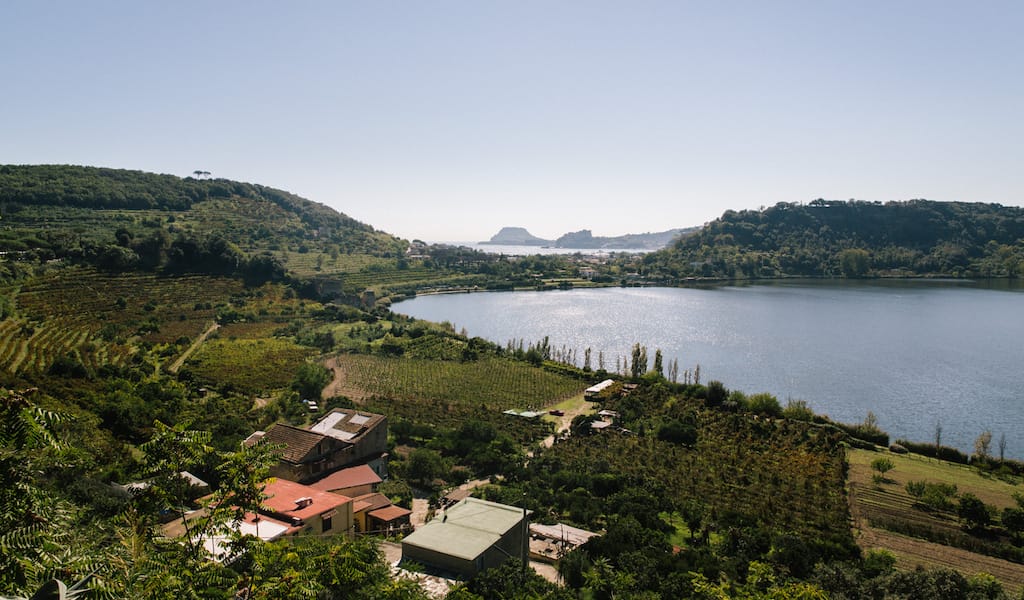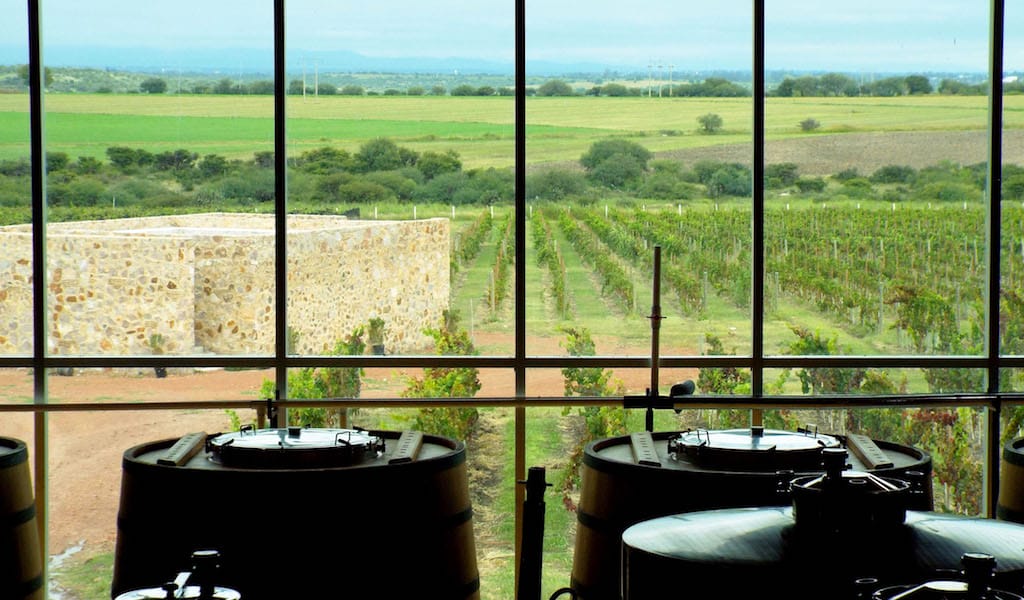It’s a crisp and cold winter morning in Alentejo. We are in Mora, a one-and-a-half-hour drive from Lisbon, to visit Susana Esteban’s winery, a very simple adega where her award-winning wines are made.
Susana welcomes us at the door and leads us inside, where, sitting among the barrels, we taste her wines. They leave a strong impression on us, and not just because of the early hour – the wines have a distinct personality, one that’s formed on the vine. Yet when we peek outside, there are no vineyards in sight, only oak and cork trees. That’s because Susana grows her grapes in Serra de São Mamede, a mountain range in Portalegre, one-hour east of Mora and close to the Spanish border.
Shuttling between Portalegre, Mora and Lisbon, where she lives half the year, can be exhausting. But for Susana, it’s worth it for the fresh wines that she bottles using the mountain’s indigenous grapes – wines that have been earning her acclaim since she started producing her own vinho in 2011.
“The region has two main features: it’s mountainous and has also a lot of granite in the soil,” she explains. “Freshness to me is fundamental in wines, that’s why I choose Serra de São Mamede and also because they are old vines.”
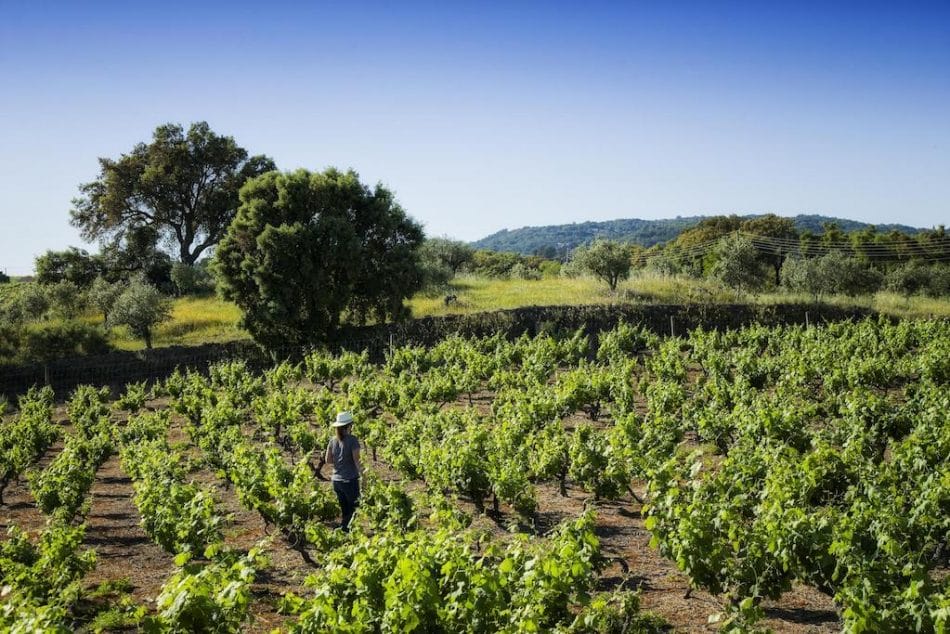
It’s September, and we’re sitting with Susana in Lisbon on one of the rare days that she’s not busy with the harvest in Alentejo. During this demanding period she works long hours, seven days a week, living between Portalegre and Mora, going back and forth, back and forth (she hopes to complete a new winery near the vineyards by next year). “Normally I start in the first week of September with the whites, and then the reds are harvested until the end of the month,” she tells us.
If anyone knows about the intricacies of the grape harvest and winemaking, it’s Susana. Originally from Tui, in Galicia, Spain, right on the border with Portugal, she studied chemistry at the University of Santiago de Compostela and then went on to get a master’s degree in viticulture and oenology in Rioja. Twenty years ago she moved Portugal, where she has gained a reputation as a skilled winemaker. She first worked as a winemaker at Quinta do Cotto in the Douro Valley and then moved to the renowned Quinta do Crasto, where she worked for five years. In 2007, she started consulting for several producers in southern Alentejo, and eventually began producing her own wine in 2011.
In 2012, she was elected winemaker of the year in Portugal, the only woman to date who has won the award. Even though many women work in the wine industry, both in production and retail, very few have been able to thrive in this male-dominated field. “When I went to Alentejo and started my own project after having worked in the Douro for so many years, a lot of people were expecting me to fail. I don’t remember seeing that [expectation] with men,” Susana says.
“I prefer for the wine to be perfected in the vineyard, that’s what brought me to the mountains.”
It took Susana two years to find the perfect vineyards, but they were worth the wait. Her small plots are at different altitudes, with the highest reaching heights of 700 meters. It’s cooler in the mountains, and the unique microclimate results in a greater range of temperatures compared to the rest of Alentejo. During the day temperatures rise above 30 degrees Celsius (86 degrees Fahrenheit), sometimes going up to 40 degrees Celsius, but at night they drop.
This variation in temperature is good for the grapes: the longer it takes them to mature, the better the wine. “If it’s too quick and with lots of heat there are components of the grape that don’t mature the right way,” she explains. “My wines are looking for freshness and you can get that in altitude or going closer to the sea, like the Alentejo coast.”
The old grapes in her vineyards are indigenous. Previous producers grew white and red grapes all together, but Susana is harvesting them separately and, unlike her predecessors, she’s not mixing the red and white grapes. “Within red and white there are so many different grapes, some I can’t even recognize – they are old varieties,” she says. “But to me it’s not important their names, the important thing is the final result.”
That’s why the labels of her wines say vinhas velhas (old vines), which means they are a blend of Portalegre’s traditional old grapes. Take her Procura rosé, which features a curious blend of purple muscat (moscatel roxo in Portuguese) and aragonês grapes, resulting in a crisp and dry rosé.
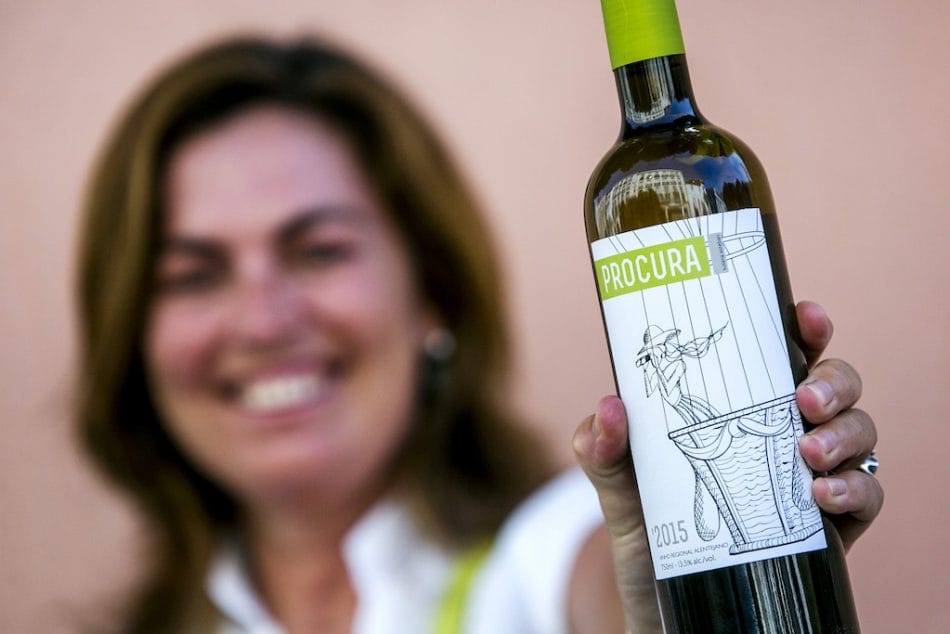
While climate change has altered the timing of the grape harvest in most places in Portugal, Susana feels protected in the mountains. “It’s my 13th harvest and I’ve been doing it always more or less at the same time,” she says. “Outside the mountains it’s much hotter. Also the old vines kind of self-regulate, but the young vines have many changes from year to year, and are not consistent. In my area I haven’t noticed many things affected by climate – though last year [the weather] was weird everywhere – but in the south of Alentejo I know it is really different.”
In many other Portuguese wine regions, the harvest is now happening at the end of August and in September, whereas September and October used to be the norm. “When I was in Douro I would never start the harvest before September 15th, and now they are doing it at the end of August,” Susana recalls.
Several scientific reports are forecasting that the climate crisis will have dramatic consequences for winemaking in Alentejo: Temperatures will be so high and water so scarce in 50 years that it will be impossible to maintain vineyards in the region. “The lack of water is a huge problem. The vines in southern Alentejo and in the Upper Douro are in hot areas and they need to be watered. If there’s no water they will die,” Susana says, whereas there’s no need to water her vineyards thanks to the old vines and the unique microclimate.
As a result, big companies from the Douro are now investing in Portalegre. Producers from southern Alentejo are also looking for vineyards there, so as to mix grapes from these mountainous vines with the ones grown in the country’s hottest area. Susana explains: “In the warmest areas you have to harvest early but then you lose some elements, or you’ll have to mix with areas that are cooler.”
But some of the effects of the climate crisis are actually benefiting Susana’s wines. The reds she’s making now are 12.5 or 13 percent alcohol, but they probably wouldn’t have been higher than 9.5 or 10 percent a few decades ago. “Because they’re facing north, these red grapes used to not mature as much,” she explains. Now, with the warmer temperatures, these grapes can get riper and end up with higher sugar levels, while still keeping the freshness that Susana rates so highly.
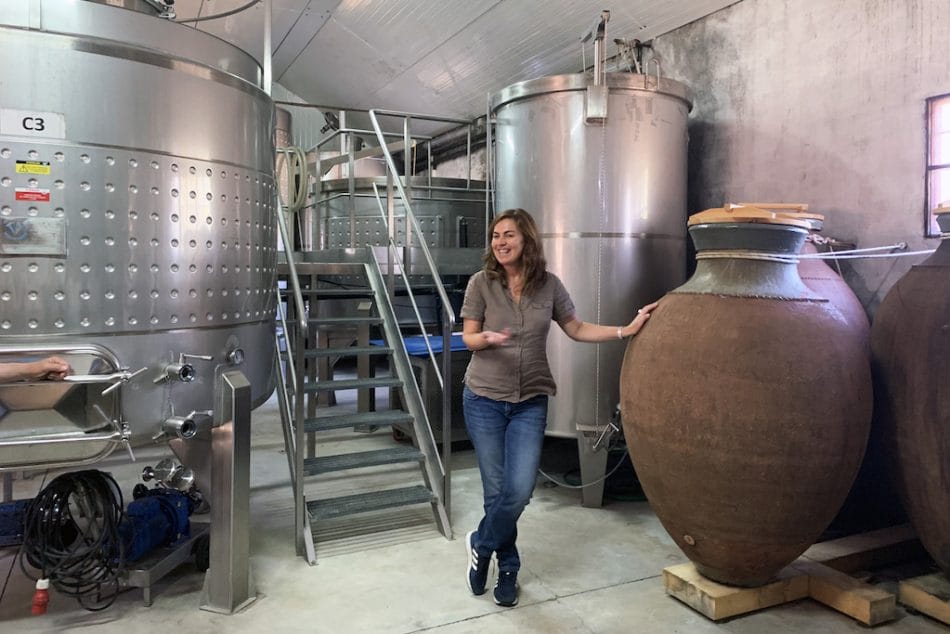
“But if the temperatures keep rising I don’t know what will happen in my region too,” she adds. “We can make fresh wines in almost any area but with a slightly artificial way in the winery. I prefer for the wine to be perfected in the vineyard, that’s what brought me to the mountains.”
That’s not to say that she doesn’t experiment with fermentation. One of her most singular wines is the Procura white (so named – “procura” means quest – because of her long search for the right vineyard), currently her only amphora wine. “I do it very differently from the traditional amphora ones,” she explains. “Normally you feel the clay, the wines are not so smooth and there’s contact with the skin of the grapes but I wanted to deal with the amphora in a more sophisticated way.” The wine ferments in a huge 19th-century clay urn, then is removed. It then goes back for another 8 months in the amphora before being bottled.
But as to be expected from such a forward-thinking wine producer, Susana is putting her own twist on the traditional amphora, or talha, wines from Alentejo. “To me the most important thing as I work with these old vineyards, which are like treasures, is to preserve the freshness that comes from the vine itself,” she says. “I like to respect that and not let the amphora have a leading role.”
“In all the wines I make, I try to preserve the identity of the vines,” she adds.
Editor’s note: To celebrate the start of fall, we’re running a series focused on the grape harvest and winemaking.
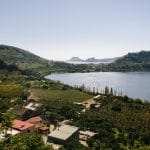 October 15, 2019 Wine Harvest 2019
October 15, 2019 Wine Harvest 2019
Imagine the most extraordinary location for a vineyard that you can. Got an image in […] Posted in Naples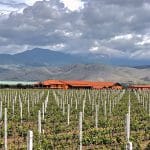 October 9, 2019 Wine Harvest 2019
October 9, 2019 Wine Harvest 2019
Amyndeo, a mountainous region in northwestern Greece, is a prime spot for producing wine […] Posted in Athens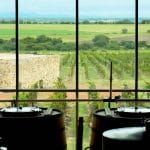 October 8, 2019 Wine Harvest 2019
October 8, 2019 Wine Harvest 2019
The wine harvest is about timing. The time it takes for a grape to ripen to optimal […] Posted in Mexico City
Published on October 14, 2019
Related stories
October 15, 2019
NaplesImagine the most extraordinary location for a vineyard that you can. Got an image in mind? Well, we think Cantine dell’Averno, a four-hectare vineyard in Pozzuoli, has it beat: Not only are its vines growing inside the caldera of a volcano that is theoretically still active, but they also surround the ruins of a Roman…
October 9, 2019
AthensAmyndeo, a mountainous region in northwestern Greece, is a prime spot for producing wine – in fact, it’s one of the most important wine regions in the country. Located between two peaks, Vermio and Voras, this area is known for cold winters with enough rainfall and snow for the vines to withstand the relatively dry summers…
October 8, 2019
Mexico CityThe wine harvest is about timing. The time it takes for a grape to ripen to optimal sweetness, the moment they are cut from the vine, the days or weeks that each mix of crushed grapes and juice sits in fermentation tanks or oak barrels. Timing is everything and to get it right, you not…














































